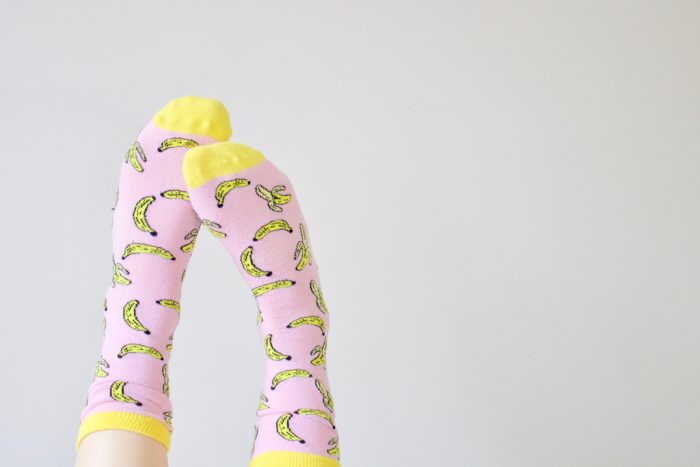Growth is the name of the game in retail and it is only possible by experimenting over time to match your offerings with evolving customer needs. There are two distinct ways of branching out: line extension and brand extension. They have different benefits and risks, but they both help brands offer new products to new and existing customers.
Below we define both marketing concepts, compare and contrast them, and break down ways that you can get the data you need to move forward with these strategies effectively.
What is a Line Extension?
A line extension is a strategy to offer customers more options by changing your existing product lines slightly. Think of this as adding a bit of variety to your current offerings without going too far off base.
Take Hanes for example. The brand typically sells socks in large packs, but breaking them up into single pairs might work better for budget-conscious consumers. In this example, the new line is just an extension of a previous offering, but packaged differently to appeal to new segments of the market or meet the new needs of existing customers.
The benefits of this strategy include offering more options for a product that has been established as successful and owning more physical or digital shelf space. It is a rather safe way to extend product offerings, but there is always a chance that shoppers won’t take a liking to it or that it will eclipse the original offering.
Another example is Oreo. The original “Oreo biscuit” came out in 1912 and since then the parent company has tried out a number of different versions. They have varied in success with new flavors and sizes, but some have stuck around for decades, like the Double Stuf Oreos. This variation was launched in 1975 and is still found on shelves today. Sometimes finding success with line extension hinges upon trying a number of experiments and seeing which ones end up being consumer favorites.
This trial and error is a worthwhile endeavor because occasionally a brand finds a new line that excites consumers and has staying power. Never mind the failures they might have had along the way, it’s just a matter of really understanding what shoppers want and finding new and exciting ways to provide it to them. This is also true of brand extension, but this retail strategy comes with significantly more risk.
Sometimes finding success with line extension hinges upon trying a number of experiments and seeing which ones end up being consumer favorites.
What is a Brand Extension?
Brand extension is a significant departure from a brand’s core products. It involves experimenting with a new type of product and relying on customer research and strong branding to help it become successful. An example of this might be a luxury brand that enjoys a significant market share in footwear deciding to launch a fragrance. This new product line has the opportunity to appeal to shoppers, but only if it is done right.
A brand may try to add a new product because they have built up enough brand recognition and loyalty to be able to venture out to other product categories that their customers have asked for. In order to have a successful launch, customers have to trust and be willing to try this new product line. It typically can’t be too far from the core offering or jump into a significantly different pricing tier, because this is likely to cause confusion among consumers. The light at the end of the tunnel is: If everything goes according to plan, this extension can be part of larger brand strategy growth.
A Failed Brand Extension
But sometimes consumers don’t react positively to a vastly different product extension. Take the Amazon Fire Phone. When it launched in 2014, Amazon was enjoying success from its online marketplace and web service offering. Based on the success of their 2007 Kindle e-reader and 2011 Kindle Fire tablet, a phone could have seemed like a logical next step in their hardware endeavors. But sales never materialized for the Fire Phone the way they did for the Kindle and it was discontinued after a mere 13 months.
Amazon offers other brands a few cautionary tales. First, any brand or retailer can try a seemingly promising brand extension and fail. Second, brands must keep their ear to the market to understand gaps in what consumers want and need. Just because a previous extension worked, that doesn’t mean a related experiment will have the same results. Third, brand extensions can have an impact on brand image. Amazon is in the fortunate position to be able to shake off failures because their core products are so strong, but not all brands have that luxury. A highly publicized failure has the ability to kill off other brands. Therefore, brands must weigh their options and expenditures first before pouring a lot of time and money into a new offshoot.

A Successful Brand Extension
Just as there are notable brand extension failures, there are also big wins that must be noted. Starbucks is relentless in their quest to extend their brand with new food and drink options. Consumers are often greeted with new beverage items in-store and on their app, especially during the holiday season. While Starbucks is most known for their coffee, their experiment with the pumpkin spice latte led to not just an annual hit, but also a cultural moment (no matter how you feel about it, you simply can’t ignore it). Starbucks really branched out on this one, but they also shore up these big bets with smaller line extensions as well. This might look like adding new cup sizes or a different roast of coffee from time to time.
While such a global brand may be able to devote resources to both extension strategies, some brands might want to start with one or the other. So how can they decide which one is right for them?
When Should You Choose Line Extension vs Brand Extension?
Line extensions are safer plays for brands, as they are small experiments within arenas in which the business is already succeeding. Adding a little variety to the product offerings rarely hurts the original. But just as it is a relatively low risk, the reward is typically also smaller. This can be a good place to start for newer brands or well-established brands that have not changed their offerings much during their many years in business.
The other side of the coin, brand extension, is a complete departure from the core business. But if the new line is perfectly aligned with the brand and what customers want, then it can pay off handsomely. This is a good strategy to leverage if you have especially strong brand equity. Think of a brand name like Supreme. While you may be familiar with their sportswear lines and accessories, did you know they sell shower caps? Very few brands would be able to pull that off and have such a seemingly unrelated product fly off the shelves. It is a testament to the strength of their brand and understanding of what their customers are willing to pay for.
Line extensions are safer plays for brands, while a brand extension is a complete departure from the core business.
How to Get the Necessary Shopper Data
Data is essential in order to tackle either of these strategies effectively. Brands need to know what their customers really want and what competitors are already offering. Wiser Solutions sheds light on these shopper insights with in-store retail auditing. This gives brands a view into shopper preferences around packaging, pricing, brand, and more. After all, if you spend time developing a line or brand extension, you’ll want to be sure that its in-store presence is executed properly, from displays to store associate training. Otherwise, that time, effort, and money will be wasted. And online data is helpful as well, just in case there is any discrepancy between what a competitor brand offers in-store and online.
Next, you’ll need to understand how promotional displays factor into buying decisions. If you decide to branch out significantly with a brand extension, you might want to do a big in-store push for the launch. But if shoppers don’t respond to end cap displays in certain retailers where your products are sold, you’ll want to know that before you sink dollars and effort into getting them set up.
To summarize, there are three sides to a line or brand extension roll out.
- First, you need to fully understand what shoppers expect from your brand and what existing gaps you can fill.
- Then, you will have to build the offering in a way that will appeal to them.
- Lastly, you’ll need to present your new product to them in a location and at a price point that will encourage them to make the purchase.
Launching a new product via line extension or brand extension is a great way to further live up to your brand promise and encourage new shoppers to buy from you. It takes a considerable amount of data to get either right, regardless of the notoriety of the brand. So be sure to explore a retail data partnership to back up any upcoming product launch with the necessary market and competitive data.














